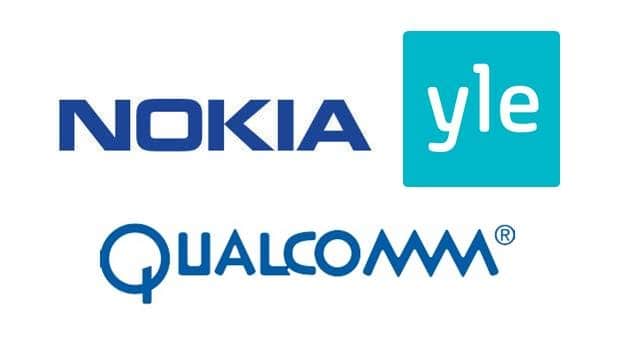Qualcomm, Nokia and Finnish broadcasting company, Yle announced they will conduct the world’s first demonstration of the LTE Supplemental Downlink (SDL) technology in a TV broadcast band.
Allowing for innovative and interactive broadcast services, LTE SDL in a TV broadcast band provides new opportunities for broadcasters, which is also technically viable and does not harm Digital Terrestrial Television (DTT). The live demonstration is scheduled to take place at the Nokia Executive Experience Center in Espoo, Finland from 12 - 3 p.m. on September 2.
LTE SDL uses the concept of flexibility in the Ultra High Frequency (UHF) broadcast band to deliver advanced media services to tablets and smartphones without creating interference to existing DTT services in the band. Currently supported on 4G LTE networks, and expected to be supported in the early stages of 5G, LTE SDL technology allows media publishers and network operators to optimize the usage of available UHF frequencies.
This demonstration is relevant in the context of a proposal made by the European Commission to introduce a flexibility option in the 470-790 MHz (lower UHF) band, which is currently used by Digital Video Broadcasting (DVB) networks and by wireless microphones using the gaps between DVB channels.
There has been a push in recent years by European countries to utilize the 700MHz band for mobile communications, which is supported by the European Commission in an overall EU strategy for the broadcast band.
The flexibility option for the 470-694 MHz band is included in the draft decision of the European Parliament and of the Council on the use of the 470-790 MHz frequency band in the Union, which was published in February this year.
Enrico Salvatori, senior vice president and president, Qualcomm EMEA
LTE SDL will not only enable broadcasters to reach out to tablets and smartphones, but will also enable many new services, including contextualized and individualized advertising, on-Demand TV, and mobile payments.
Stephan Litjens, vice president, Nokia Innovation Steering
With LTE carrier aggregation operators can access this unpaired spectrum to increase downlink capacity. This is vital in allowing operators to cope with the growing asymmetric downlink traffic which is driven by video, user generated content and new media services.




















